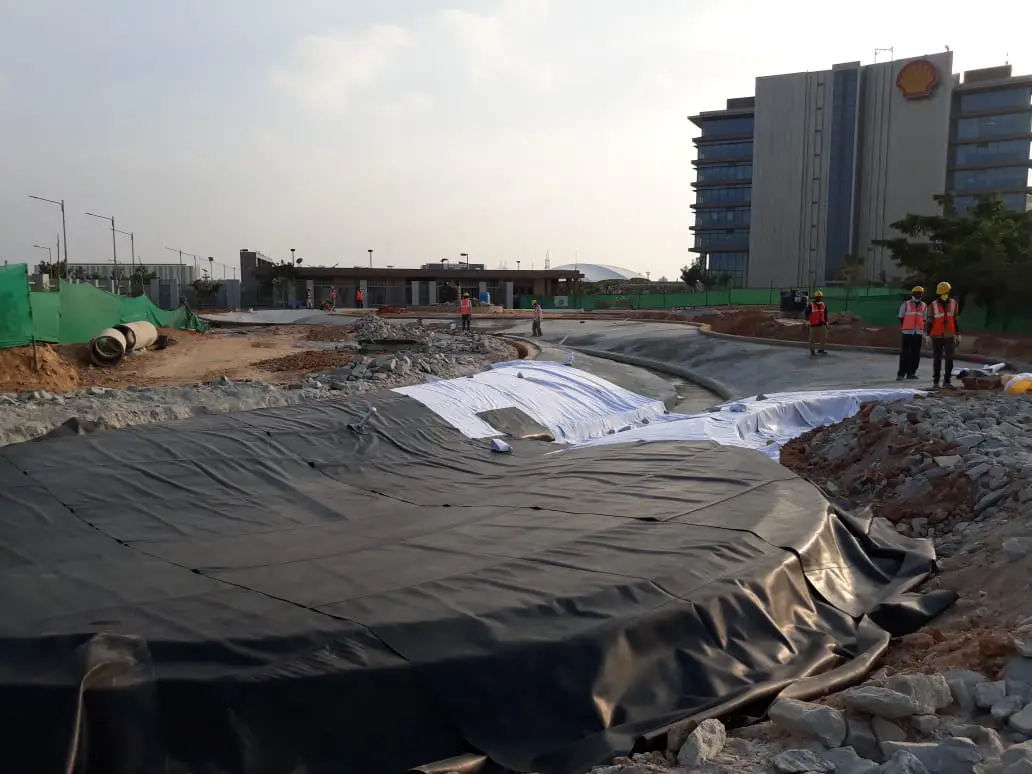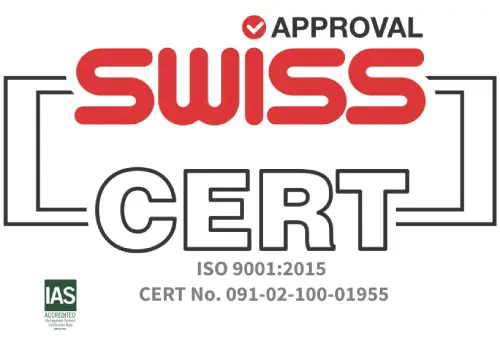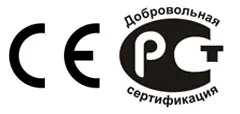2025

Advantages of Polygomma EPDM Rubber Waterproof Membrane in Flat Roof Applications
Flat roofs are popular in modern architecture for their sleek appearance and space-saving benefits. But when it comes to durability and waterproofing, they require the right material to withstand the elements and stand the test of time.
Among the best solutions available today, Rubber Waterproof Membrane in Flat Roof applications—especially Butyl Rubber waterproof membranes—shine through for their impressive performance, versatility, and long-lasting protection. Whether you’re constructing a new building or upgrading an existing roof, this membrane is designed to deliver reliable waterproofing and more.
Its ability to expand and contract without sacrificing waterproofing makes it ideal for new construction works and roof renovation schemes.
1. Outstanding Waterproofing Properties
One of the primary reasons why this Rubber Waterproof Membrane in Flat Roof applications is preferred is due to its exceptional waterproofing ability. Its secured seams and non-porous nature does not permit water to enter into the roof structure, hence reducing the likelihood of leaks. In contrast to some of the traditional roofing materials that weaken over time, this membrane does not weaken even when exposed to water for a long duration.
The material’s high elasticity also allows it to accommodate structural movements without compromising its waterproofing performance. This makes it particularly beneficial in areas with fluctuating temperatures, where expansion and contraction can lead to cracks in less flexible roofing materials. Additionally, its strong adhesion to various surfaces ensures complete protection against water ingress.
Its excellent impermeability to gases further improves its sealing ability, making it suitable not just for moisture but also for other forms of atmospheric exposure.
2. Superior Durability and Longevity
Flat roofs are subjected to extreme environmental conditions throughout the year, such as UV radiation, rain, snow, and temperature fluctuations. The membrane is extremely weather-resistant, providing a durable roofing solution. Its weathering and ageing resistance ensures that it remains effective for decades with minimal loss of properties.
Additionally, this Rubber Waterproof Membrane in Flat Roof systems has high tensile strength; hence, it is resistant to puncture and tear. This is especially important in heavily trafficked areas or in locations that experience severe weather, where the roof may be physically stressed. Its solid composition ensures that it will not be damaged even when it comes into contact with strong winds and heavy rain.
The membrane also offers UV and ozone resistance, which makes it ideal for long-term exposure to sunlight and atmospheric conditions. It is also a single-ply membrane, making installation faster and more efficient.
3. Flexibility and Elasticity
One of the best aspects of the Polygomma EPDM Rubber Waterproof Membrane in Flat Roof applications is its flexibility. In comparison, harder roofing materials will crack when the building shifts; this membrane flexes and molds to the roof’s shape, accommodating any shifting or settling of the building framework. This flexibility does not provide stress points where damage can form, which reduces the likelihood of damage in the long run.
Its ability to expand and contract without sacrificing its waterproofing characteristic makes it a trustworthy option for new construction use and roof restoration use. Applied on a newly constructed building or laid over an existing roof, it provides ongoing protection without the danger of cracks developing due to movement.
This adaptability makes it suitable for a wide range of climatic and temperature zones, offering performance consistency in both hot and cold environments.
4. Easy Installation and Low Maintenance
A key advantage of using a Rubber Waterproof Membrane in Flat Roof applications is its seamless installation process. When installed correctly, it forms a continuous surface that eliminates weak points where leaks could develop. Unlike traditional roofing materials that rely on overlapping sheets, which can create potential entry points for water, this membrane ensures a completely watertight seal.
In terms of maintenance, this roofing system requires minimal upkeep. Periodic inspections and basic cleaning are usually sufficient to maintain its performance. Its resistance to fungal and bacterial growth also helps extend its lifespan without requiring frequent treatments or repairs. This low-maintenance requirement makes it a cost-effective option in the long run.
Furthermore, its light weight and ease of installation reduce labour and structural load, streamlining the roofing process for contractors and builders alike.
5. High Resistance to Weather Extremes
Extreme weather conditions pose a significant challenge for flat roofs. This membrane is designed to withstand harsh climates, from scorching heat to freezing temperatures. The black Polygomma EPDM membrane absorbs heat during the day, retains it, and emits it back to the atmosphere during the night. Since rubber is a poor conductor of heat, it does not transfer the heat. This is unique to rubber membranes.
Moreover, it remains flexible even in low temperatures, preventing cracks and brittleness that can lead to water infiltration. This adaptability to different weather conditions makes it suitable for various geographical regions. It retains its strength and waterproofing abilities in hot, arid climates or colder, snow-prone areas.
The membrane is manufactured in accordance with ASTM D-6134 standards, further assuring performance and quality in extreme conditions.
6. Energy Efficiency and Environmental Benefits
Sustainability and energy efficiency are becoming increasingly important considerations in construction. The EPDM Rubber Waterproof Membrane in Flat Roof applications contributes to improved energy efficiency by providing an additional layer of insulation to the roof. Its reflective properties help regulate indoor temperatures by reducing heat absorption, leading to lower energy consumption for heating and cooling.
Furthermore, this membrane is environmentally friendly due to its long lifespan and recyclability. The reduction in material waste from frequent replacements makes it a more sustainable roofing choice compared to some traditional alternatives. Its composition also ensures minimal environmental impact while maintaining high-performance standards.
Its non-polluting manufacturing process, which avoids the use of steam boilers, further reinforces its role as a sustainable roofing solution.
7. Chemical and Fire Resistance
Flat roofs in industrial and commercial buildings are often exposed to various chemicals, pollutants, and potential fire hazards. This membrane exhibits excellent resistance to chemicals, making it suitable for areas where exposure to oils, solvents, or industrial pollutants is common.
Additionally, many variations of this membrane come with fire-resistant properties, enhancing the overall safety of the building. Compliance with fire safety regulations ensures a secure roofing system that minimises risks associated with fire outbreaks. By resisting chemical corrosion and fire hazards, it provides added protection for commercial and industrial structures.
8. Adaptability for Different Roofing Applications
Whether used for new construction, refurbishment projects, or overlaying existing roofs, the membrane provides versatility in application. It can be installed over various substrates, including concrete, metal, and insulation boards, making it suitable for different types of flat roof structures.
Its compatibility with a range of roofing systems allows building owners and contractors to integrate it seamlessly into their projects, ensuring optimal performance and protection.
Thanks to factory-made higher widths (up to 6 metres with seams), installations are quicker and involve fewer field overlaps—minimising potential weak spots.
9. Cost-Effective Roofing Solution
While the initial installation cost of a high-quality roofing membrane may seem significant, the long-term cost benefits of Butyl Rubber waterproof membrane make it a worthwhile investment. Let’s break down how it saves costs over time:
- Reduced Maintenance Costs: Its durability means fewer repairs and lower maintenance expenses over time.
- Extended Lifespan: Unlike some traditional roofing materials that require frequent replacements, this membrane offers a longer service life, reducing the need for costly roof replacements.
- Energy Savings: Improved thermal efficiency contributes to lower heating and cooling costs, making the building more energy-efficient.
- Economical Price: The easy availability of raw materials and fewer overheads allow the membrane to be offered at a competitive and economical price, delivering value without compromising quality.
10. Eco-Friendly and Sustainable Roofing Choice
As sustainability becomes a key factor in modern construction, the Rubber Waterproof Membrane in Flat Roof systems—especially Butyl Rubber—stands out as an environmentally responsible choice. Its ability to be recycled at the end of its service life reduces landfill waste, making it a more sustainable option compared to non-recyclable roofing materials.
The membrane is manufactured with ISO 9001-certified quality processes and advanced technologies such as intermesh mixing and cold feed roller head technology, ensuring a compact, high-density membrane with superior performance. The use of online vulcanizing mechanisms ensures uniform curing across every square inch, offering consistency and reliability in every product.
Key Takeaways
- Offers superior waterproofing, gas impermeability, and flexibility ideal for flat roofs
- Highly durable with resistance to UV, ozone, weather, and chemicals
- Flexible and elastic even in extreme weather and temperature zones
- Lightweight, single-ply membrane is easy to install and reduces structural stress
- Easy application ensures leak-proof performance and low maintenance
- Enhances energy efficiency and supports eco-friendly construction goals
- Fire-resistant and chemically resilient for commercial and industrial usage
- Compatible with various substrates and suitable for diverse roofing applications
- Manufactured with advanced, non-polluting technology to ensure quality and sustainability
- A cost-effective and long-term roofing solution with fewer replacements and repairs

